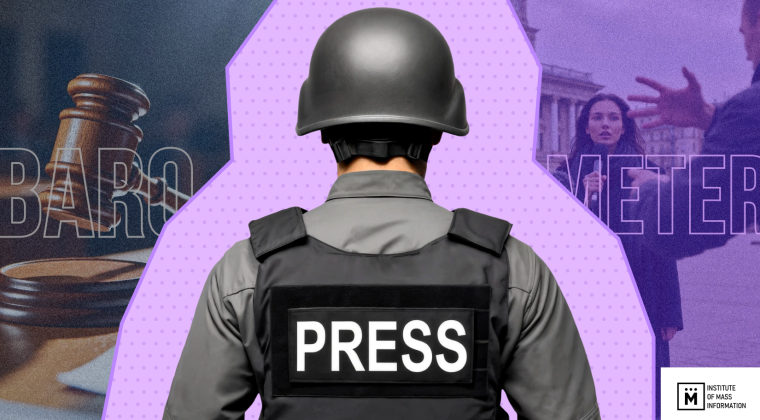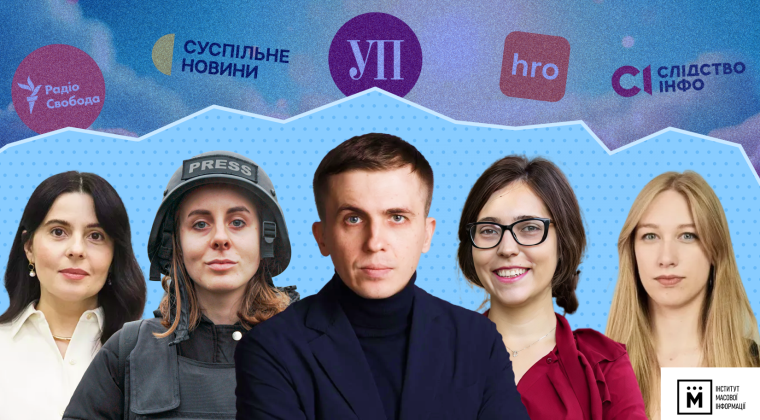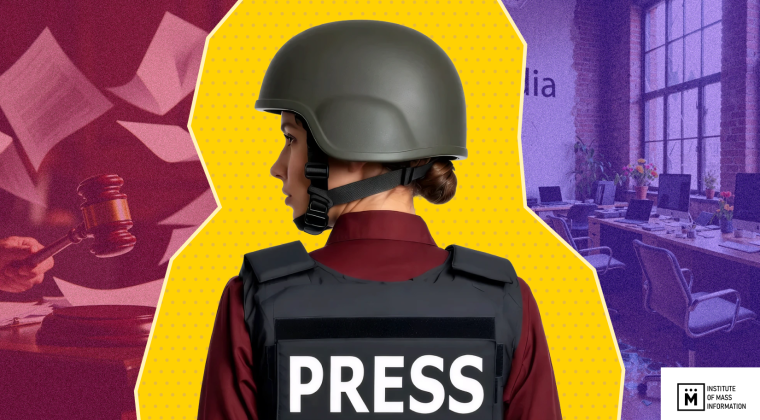When intolerance in the society reaches dangerous limits, when “others” start to get killed, the role of mass media in bringing relations in the society back to normal is felt very acutely. Just as all citizens need to be treated equally by the state equally, so the journalists should also present information about anyone impartially, avoiding manifestation of their own biases. Otherwise, their biases will affect our actions, our communication with each other, and will continue to legitimize all things, including violence.
IMI experts conducted monitoring of news that were dedicated to Roma related events, in 12 online media outlets* for June of 2018 to verify if stereotypes still influence journalists, who does what emphasis and how the tragic events in Lviv are covered, which indeed was the reminder that we all are responsible.
Romaphobia in news
Murder of Roma youth in Lviv, as well as numerous bashings of the Roma camps all around Ukraine, of course drew attention of Ukrainian mass media. In total, there were 389 news at 12 news websites in June 2018 that were dedicated to the Roma. Of them, the largest share of publications was related to murder of David Papp, and the trial on this murder. Online media outlets dedicated 163 news to this (42% from all registered news). Another large bloc was the news dedicated to response of international community and Ukrainian public figures voicing the necessity to protect the Roma community, and also discussions on how to integrate them into Ukrainian society, problems of negative attitude to them and to other minorities, etc. – such topics were covered in 99 publications (25.4%). The third largest category of news was news about bashings, where the journalists were actively using photographs, videos, and materials from social networks of organizations that participated in the bashing, including full quotes of the radicals – 41 news (10.5%). An indicative factor is that, in addition to the main newsbreaks of the months, journalists were mentioning Roma only in crime reports (6.7%), were reporting the location of new camps, parliamentary initiatives on deportation of Roma without proper official documents, etc. (8.5%). It is also important to indicate that each 12th registered news included hate speech.
Of course, each editorial office was making its own accents in covering the Roma related topics and news. For example, “Strana.ua” and “Vesti” paid greater attention to the radicals and their role in growing xenophobia, physical aggression, and also, were whipping up the situation by making a lot of value judgments and emotional expressions published in materials (“No one would survive – new details of Roma camp pogrom”, “Vesti”; “What neo-Nazi prove when they beat Roma and how it will help them to get to power”, “Vesti”; “Ultra-Right sweep. Who and why set up bloody pogrom in Roma camp in Lviv”, “Strana.ua”; “If the government does not deal with radicals, they will soon deal with the government”. What social networks discuss about the bloody pogrom of Roma in Lviv”, “Strana.ua”, etc.).
“Obozrevatel”, as always, was not ashamed to use “very descriptive” headlines about the tragic events to get more clicks: “The innards could be seen”: morbid details of Roma butchery in Lviv surfaced”, “They were murdering as a group, cutting the mother”: morbid details of attack against the Roma camp in Lviv”, “Maidan, ATO and Hitler’s ideas: what is known about Roma abusers in Lviv”, etc. In addition, in the news about conflict between the groups, the position of Roma was practically always absent. In the editorial office of “Obozrevatel”, they decided that it would be a reliable way to get attitude sampling to get opinions of Internet users, even though the question was about attitude to the beating of ecologist by Roma in Kyiv park (the news from the social network), the media outlet published this: “According to the conducted survey, 58% of the surveyed are taking a radical stance regarding to the actions of this ethnic group” (“Attack of Roma against ecologist in Kyiv: Ukrainians found solution for the problem”).
Website “RBK-Ukraina” was covering the main events of July related to Roma on a quite complete level, still producing a lot of news pieces that were crime reports emphasizing the ethnicity of criminals. Also, the media outlet published an exclusive interview of the leader of the party “National corps” Andriy Biletskyi, where, among other things, Biletskiy says: “The nomad Gypsies, as far as I understand, are hardly more that 10 out of 48 thousand. But they turn life in Kyiv into hell. This is my upbringing, my ideology: I must protect my fellow citizens. If it is not done by the agencies that you were talking about, it means we will be doing this, and that is normal. Because they do not function” (“Andriy Biletskyi: Current government does not have moral authority to violence”). There were also analytical materials about “Who is behind attacks against Roma settlements and how authorities respond to this”.
Websites such as “Segodnia”, “ICTV”, UNIAN, on one hand, paid sufficient attention to the tragic events in Lviv, but on the other hand, they used negative descriptions of Roma in the news that were not related to bashings and the murder, were never providing opinions of the Roma when the news was about the bashing of the camp, the conflict, etc. An indicative fact is that UNIAN, when covering the bashings, uses the word “Roma”, while in the crime reports using the word “Gypsies”: “Came to in pool of blood”: in Kyiv, near the railroad station, Gypsies smashed 16-year old boy’s head”. Still, “Segodnia” produced a separate material on protest action against racism (“Roma of Zakarpattya went to rally with mottos “No to racism”). However, the whole news is just the link to the entry in social network about the rally, and a reference to the story of the TV channel “Ukraina”, which does not mention the rally at all. The news website “Fakty” of the TV channel “ICTV” avoided the word “murder” in the news headlines about the events in Lviv, instead calling it “an attack against camp of the Roma”, and that “there was a casualty”. Also, the website dedicated a lot of attention to crime reports where Roma were actors, not saving on emotional rendition and generalizations (“Roma set up a new camp in Kyiv, and beat passers-by”, “They choop wood and throw stones: Roma populated Holosiyivskyi Park”).
Neutral and quite balanced coverage of news on Roma in June could be observed on the websites “Novoye vremya”, LIGA.net, TSN.ua, “Gordon”. IMI experts did not find any hate speech against the Roma there. One more notable thing is publication by “Novoye vremia” – “So where is your horse? People with Roma heritage and appearance speak about society’s bias”, where four heroes tell about the society’s stereotypes, fears and biases against them. The experience of the article main characters they show how hard it is to be different in the Ukrainian society. At the website “TSN” they rebroadcasted the stories of TV channel “1+1”, where journalists tried to investigate, using help of psychologists, “what pushes schoolchildren to be cruel”. In other news the comments of the Roma people, their advocates, expert on Roma etc., are provided. “Gordon” also addressed advocates, experts, published entries from social networks where well-known individuals were condemning murdering a person for their ethnicity (“Advocate Matviychuk about an attack against the Roma near Lviv: It’s not the first time that I notice that things like this take place on the eve of important international events”; “Journalist reshetilova: When you say casually something like: “Gypsies need to be smacked”, some youth somewhere can actually go and do it”).
The news website of channel 24, on one hand, was publishing the comments of the Roma, of their advocates, analyzed how lack of tolerance caused the murder, why Ukrainians treat minorities like this (“Attack against Roma: on reasons of pogromsand ways to resolve the problem”, “Latent xenophobia to Roma in Ukraine starts from childhood – expert”, “How the Roma became notorious and why in Ukraine there are few mechanisms to integrate them”). Yet the website also had several materials for June published which included hate speech, or assumptions that are not based on anything – in fact, biases of the journalist published. For example: “The level of animosity to the Roma in the Ukrainian society is rather high, and this provokes attacks against this national minority, by, in particular representatives of the Right radicals” (“Advocate explained why integration of the Roma to Ukrainian society failed”).
Still, mass media started publishing some good quality materials on Roma, media expert and advocate Olha Vesnianka says. It is true, there are few of those, and usually they are an outcome of special training of the journalists for unbiased coverage of such topics. “I can give an example – work of a group of female authors who were trained in OSCE School of Conflict Journalism, on access of the Roma children to education (“A way to socialization: how Roma children are educated in Uzhhorod”, “The Ban”). It is important to mention that in this case the journalists at first went through a separate training, not trying to tackle the material without any background knowledge on the topic. Hromadske Radio is also worth mentioning, which aired a weekly origram about the Roma, “Chiriklo”. It was in fact the only targeted media product, other than the program in Zakarpattya, hosted by young Roma public personality, Viktor Chovka”, – Olha Vesnianka mentions. Also, the advocate mentioned that although addresses of many mass media to the experts when covering the Roma is a good sign, yet the demand for those experts appeared only after numerous attacks against the camps. “This shows how superficial are the Ukrainian online mass media are, how they are chasing only things that draw attention how they do not have any mission in society to investigate these issues on a more deep and diverse level”, Olha Vesnianka commented.
Mass media that incited hatred against Roma
Even in spite of popular news media are now rarer in calling the Roma “Gypsies” and similar names, hate speech can be encountered periodically, and helps to strengthen and reinforce dangerous stereotypes. During the monitoring, we registered 8% of news that included hate speech.
In particular, the brightest example was crime reports, where they always mentioned ethnicity when speaking about crimes commited by Roma. In July, these were the reports about rape in Cherkasy region (“In Cherkasy region, Roma raped a minor at the cemetry”, “Obozrevatel”; “Near Cherkasy, Roma raped a girl at the cemetery”, RBK-Ukraina; “Roma raped a minor at the cemetery”, channel 24), beating of a noy in Kyiv (“Came to in a pool of blood”: in Kyiv, Roma have cruelly beaten teenager”, “Obozrevatel”; “Came to in a pool of blood” – in Solomenka district, Roma attacked teenagers”, “Vesti”), beating of ecologist in Holosiyivskyi park (“In the network they published video of Roma attack against ecologists in Kyiv city park”, RBK-Ukraina), etc.
But similar crimes are also commited every day by people of other ethnicities, but this information is never mentioned in similar news pieces. In addition, all news are based on entries from social networks that are usually posted by third people, which also compromise validity of such information. The opinions of Roma in such news is practically always absent, and some essential details are not mentioned. For example, the teenagers allegedly attacked by the Roma near Kyiv railroad station, were walking near their temporary camp with a lit flare, and the only comment to this piece of news is emotional appeals of the injured boy’s mother.
In addition, the journalists, when describing Roma camps quite often use words like: “occupied”, “privatized”, “created neighborhood “Aynene”, “seized”, “captured”, etc. (“Roma occupied territory near railroad station in Kyiv they beat passers-by and leave heaps of trash behind”, UNIAN; “Territory near railroad station in Kyiv was “privatized by Roma””, “Segodnia”; “Roma capture the Kyiv park – social networks”, “Segodnia”, etc.).
As the media expert and advocate Olha Vesnianka said, mass media are responsible for increased aggression against Roma, one of the aspects being use of hate speech. “I several times observed how at first in the Internet a publication appears about criminals who are Roma by ethnica background, and later this material is used to whip-up interethnic hatred, and to justify attacks against people who came to the region to make some money. The same situation was in Lviv, where before the attack such publications became widespread, group “Catchers” was broadly covered in the media”, – Olha Vesnianka says.
Radicals
Websites “Strana” and “Vesti”, which aare known for propagating Russian narratives in Ukrainian information space, used this situation with the Roma to speak more about how the attitudes of Ukrainians become radicalized. Due to numerous materials, whipping-up of the situation takes place, the texts are full of generalizations, assumptions, value judgments, etc.
The mentioned websites more than others quoted nationalists directly, including open hate speech. For example: “Today, “National militia” cleansed Kyiv park from the Gypsy dirt. We will not allow turning our city into an antisanitary den, where homeless pets are eaten for dinner. Stop ignoring our laws, stealing from our citizens, and dirtying our cities”, the message goes. The activists also mentioned that they saved a cat. “Now it will live with us”, they added” (“National militia” smashed Roma camp in Holosiyiv park”, “Vesti”).
The tragedy in Lviv in “Strana.ua” was characterized as “ultra-right cleansing”. “It is not the first attacks against the camps in the capital of Halychyna”, – the newspaper adds. There are also some generalizations without sources and references: “Some Lviv residents, still, support such methods of “combating Gypsies”, and to some extent, justifies the nationalists. They say that Roma sell drugs, rob people, and even, allegedly, kidnap children”. Websites publish materials about the rise of the radical right violence in the country, and due to this “Kiev can lose the support in the West”: “Kiev can lose support in the West”. In USA, they sharply criticize С14 and other ultra-right in Ukraine”, “Strana.ua”; “Ukraine has big problems with radical right violence – Atlantic Council”, “Vesti”.
After this, “Vesti” add: “Ukrainian authorities lately conducted several actions against their recent allies – radical nationalists. It went even as far as beatings. This, surprisingly, coincided with the appeals of foreign advocates to curb the radical right in Ukraine. And the declarations of Amnesty, Human Rights Watch and other organizations were published at the same time with preparation of march in defense of LGBT”.
Recommendations for mass media
Today, in the Internet you can find a lot of online courses for journalists about how to write about ethnica minorities, and other sensitive groups. One can find also offline courses that are conducted all around Ukraine.
One more thing useful for journalists is advice from the ethical code for responsible coverage of minorities, which was developed by the Roma association of journalists in cooperation with the Center of independent journalism in Romania:
- mention the level of education, age, ethnicity, religion, sexual orientation, or political affiliation of people only when it is appropriate in the context;
- ask your interviewees how they prefer to be identified, and use this in your materials;
- avoid judging based on stereotypes and biases;
- identify your own stereotypes and biases and makes sure they do not affect your materials;
- use neutral tone when using information from other sources;
- avoid negative or positive discrimination in the material;
- pay the same attention to all parties involved when you write a material;
- add representatives of various minorities to your sources;
- remember, there can be cultural differences between you and the material you research, and this can make accessing the information harder and trickier;
- correct grammar mistakes in your quotes if they show your sources in bad light;
- cover sensitive topics with vision of creating bridges between social groups;
- seek facts and logical explanations, not someone to blame;
- crime and poverty do not have ethnicity, but can have some systemic explanations. Dig dipper.
*The monitoring covered topics dedicated to Roma, for June 2018, in the following 12 online media outlets: “Segodnia”, “Obozrevatel”, UNIAN, “Strana.ua”, TSN.ua, Channel 24, “Gordon”, “Novoye Vremia”, ICTV, RBK-Ukraina, LIGA.net and “Vesti”, as a part of “U-Media” profect, with support of “Internews-Network”. The sampling is 389 materials.
Olena CHURANOVA, IMI expert



